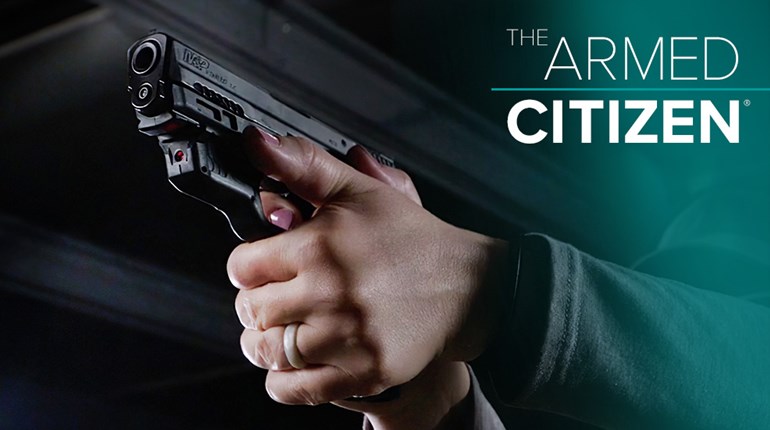
Once upon a time, all the way back when Sheriff Jim Wilson was still in high school, a tactical shotgun was essentially just a field gun with a short barrel. How times have changed. Sheriff Jim is older, and the 12-gauge shotgun has matured to fit the needs and tastes of any shooter. Customization options now include illumination systems, red-dot and ghost-ring sights, a variety of specialized home-defense loads and enough stock options to make your head spin. However, even though two shotguns may be accessorized in different fashions, proper technique changes little from one to the other.
Unless, that is, one is a pump-action and the other is a semi-automatic, or even a double-barrel. Choosing an action that's right for you is arguably the most important step in buying a home-defense shotgun. You can swap out just about any shotgun part you find wanting, but not the action. So, if you're in the market for a new defensive shotgun (aren't we all?), here's a guide to determining which type of action is right for you.
Semi-Automatic
Just a decade or two ago, semi-automatic shotguns were not considered reliable enough for tactical use. They have improved considerably, but reliability remains their biggest drawback.
"The semi-auto shotgun could be the most devastating type of action, because it can potentially put the most lead on target in the shortest amount of time," said shotgun expert Michael Shain of AimPro Tactical. "Note that I said 'could be,' because it also has the greatest potential to malfunction."
Semi-automatic rifles and handguns have overcome the reliability problems that once plagued them, but the semi-auto shotgun is slightly more finicky. Shotgun chamber pressures are comparatively lower, making it more difficult to fine-tune the rate of cycle, and plastic shotshells create more fouling and don't cycle as well as brass.
"Despite these weaknesses, I think the semi-auto shotgun will soon overcome its issues just as rifles and handguns have," Shain said. "We are making a lot of progress and semi-auto shotguns are fast becoming more prevalent in home defense."
Shain questions whether the average semi-automatic shotgun is home-defense ready, but certainly some models are. The Benelli M4, trusted by a variety of law enforcement agencies and the military, is a shining example. As with any self-loading firearm, the key with a semi-automatic shotgun is buying a quality model, finding a load it likes and frequent function testing to ensure it's in working order.
One last consideration is the fact that pump shotguns can also fail—almost always owing to user error. Ask yourself the following question: For every 1,000 rounds, how many times is a good semi-automatic likely to fail, and how many times are you likely to short-stroke a pump-action, especially under duress? We hate to admit it, but I'll bet most of us would be more consistent with the semi-auto.
Double Barrel
It turned out to be a false alarm, but I'll never forget the night my father thought we had a home intruder, or the sight of him running downstairs, ready for action, with a trap-style shotgun complete with raised rib and high comb. You know, the ideal home-defense gun—especially if the bad guy quickly leaps 40 yards into the air.
Kidding aside, an over-under or side-by-side can be good options for certain individuals. And the hype surrounding the release of the Stoeger Double Defense proves a level of interest in them.
"The double-barrel shotgun is limited, obviously, by capacity, but also because fast reloading requires fine motor skills, which break down during duress," Shain said. "But the sound of reloading is another consideration. It's a quiet gun, which gives you the advantage of stealth, but it can also be a disadvantage if you hope to use the sound of a chambering shell to deter or assess the credibility of a threat."
Shain believes such guns are best suited to the beginner or casual shooter, because their operation couldn't be simpler: Put a shell in each chamber, point it and pull the trigger.
"It's a great option for mama to have at the top of the stairs on her way to the safe room," Shain said.
Pump
The pump shotgun remains the most popular choice for tactical use, and for good reason. There's little that can go wrong with them mechanically, and companies such as Mossberg and Remington make affordable, highly customizable, trustworthy guns.
"The pump is perhaps the most useful, practical and versatile option," Shain said. "There are increasing aftermarket accessories and modifications available for the semi-auto, but the pump still reigns supreme. It's available in enough configurations to suit the advanced operator, and yet its basic use can be mastered quickly by most willing participants."
Another advantage it has over semi-automatics is the speed with which an experienced user can change ammo. Need to switch to slugs? No problem with a pump.
"The pump also has the sound advantage," Shain continued. "The sound of a pump shotgun being cycled is believed to have prevented more attacks than the actual firing of the shotgun—whether that's accurate or an urban myth is open to discussion, but that sound is universally recognized and feared."
As with most firearms, your choice in shotgun actions boils down to your experience level and preference. Personally, I'm a fan of any well wrung-out semi-automatic that has convinced me of its dependability. But, for the majority of people—including Shain—the pump is king.
"I guess at the end of the day, my 'when the rubber meets the road' recommendation for most folks is the pump," he explained. "Much like a revolver, it will always work as long as you do and, in a gunfight, reliability and simplicity are often the keys to victory. You may think that suggests a double barrel is the best choice, and maybe it is—as long as you only need two shots."



































